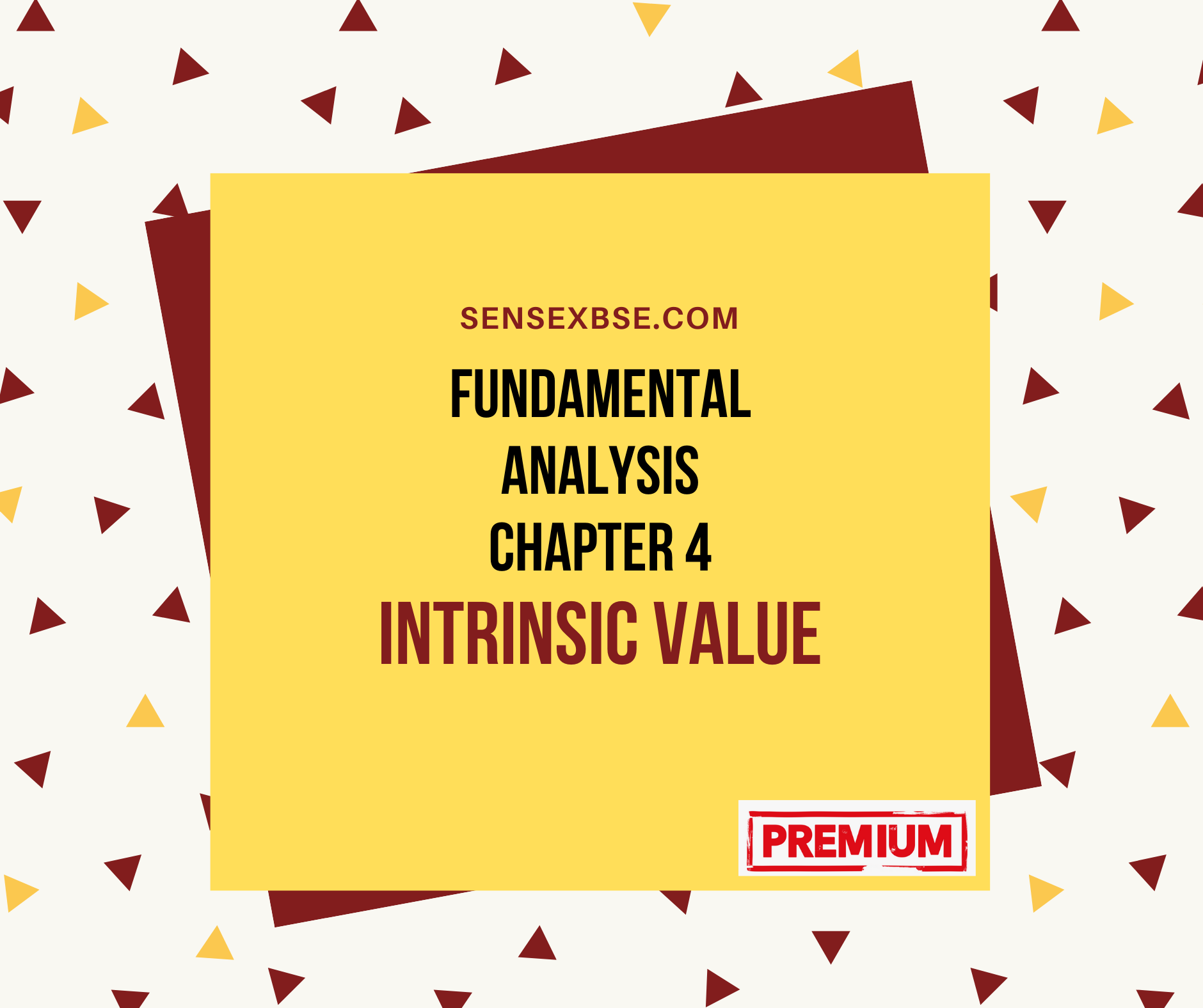What does intrinsic value mean? In business economics, intrinsic value means the fair value of all of a company’s assets, minus its debts. The intrinsic value therefore indicates the actual value. It is the value that a company (intrinsically) possesses of itself.
There are several ways to calculate the intrinsic. In this article, we analyze the intrinsic value, its meaning and how it can be calculated in different circumstances.
This article discusses the following topics:
- Difference intrinsic value vs. equity
- Advantages and disadvantages of the net asset value
- Example intrinsic value
- Real estate: Net asset value of shares
- Intrinsic Value Options
- Art: Intrinsic value of gold
- Extrinsic value
[membership_protected_content user=non-member] Unlock all premium content by purchasing Monthly Subscription plan. You’ll also get Stock buy/sell levels with charts before market open. Checkout our old stocks levels recommendation. If you already have membership please login [/membership_protected_content]
[membership_protected_content]
What is Intrinsic Value?
Difference intrinsic value vs. equity
Net asset value and equity both reflect the value of the assets. The difference between equity and net asset value is that equity focuses only on the book value. The book value comes from the balance sheet and the balance sheet only looks at accounting values. However, many of these values may be outdated. Machines can defend faster and the value of real estate can increase instead of decrease.
Intrinsic value looks at the current value of the business and also takes intangible assets into consideration. Including opinions ensures that the intrinsic value is often a lot more subjective than the equity capital. The difference between net asset value and equity can therefore be seen as goodwill / badwill not yet shown . Net asset value is also used in analyzing the value of stocks . In the article below, I’ll show you how I value stocks using fundamental analysis:
Advantages and disadvantages of the net asset value
Intrinsic value is the holy grail on paper. It should accurately reflect the value of the business without the debt. The problem, however, is that it is difficult to arrive at a universally accepted value. Intangible assets such as knowledge, contracts and the quality of the workforce are difficult to value precisely. Furthermore, valuations of intangible assets are subjective and dependent on circumstances. These intangible instrumental and extrinsic values are not exact and are more difficult to substantiate. They depend on other parts to achieve a good result. In some cases, the extrinsic value can be part of the intrinsic value of a larger whole.
Example intrinsic value
The intrinsic value is equal to the price at which other investors would buy the company after deducting the debt. This is equal to the equity plus the goodwill or discount that the company is currently worth. For example, a company has ₹ 1,000,000 in assets and ₹ 300,000 in debt. This means that the equity amounts to ₹ 700,000. However, given the profitability and outlook, an investor is willing to buy the company for ₹ 1,500,000. In that case, the goodwill would be ₹ 800,000 and the total net asset value ₹ 1,500,000.
Calculate net asset value of shares | Real estate
Shares & real estate have an intrinsic value. These are partly determined by the expected future free cash flow, which is paid from the interest and profit. It is not only about the current results, but also about the expectations for the future. After all, these determine the free cash flow, profits and future interest income. Expectations for the future remain uncertain and are not the only reason why some investors make a purchase. Indeed, both certain companies and some real estate objects are sometimes bought as a trophy.
Do art & gold have an intrinsic value?
We see that value is not always linked to cash flow in both gold and art. Both do not generate cash flow and cost money in the form of storage costs. Yet these assets also have value. For example, there are costs in the production of both gold and art. Gold is also used as an alternative to money and protection. Art, on the other hand, is pre-eminently a trophy that people buy to decorate a house.
Intrinsic value of options
The intrinsic value of options is the value of an option when it is immediately executed. Options give the right to buy shares in a certain period at a predetermined price. The value of options is determined by the intrinsic value and option premium. This option premium is determined by the time value and the volatility. For call options, the net asset value is calculated by subtracting the option’s exercise price from the underlying price. A call option with an exercise price of ₹ 100 and a price of the underlying share of ₹ 120 has an intrinsic value of ₹ 20. With put options you have the right to sell. The share price is deducted from the exercise price calculation.
Extrinsic value
Extrinsic value is the value of a particular resource in combination with something else or for someone else. This is also called the instrumental value. This is the opposite of the net asset value. Its intrinsic value does not depend on external resources or which hands it is in. In some cases there are indeed synergies. In these cases, a takeover could therefore take place above net asset value.
Financial ratios & key figures
You can find a lot of information about companies on the Trading platform. This helps investors value a company and determine the value of its shares. In addition to key financial figures, you can also find the expectations of analysts and a description of the business activities.
[/membership_protected_content]

